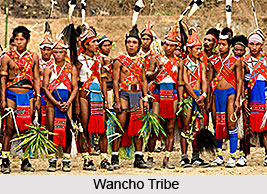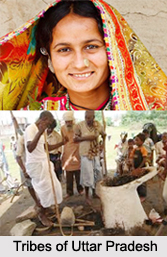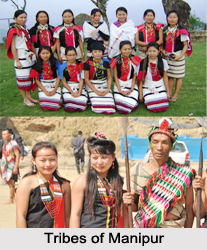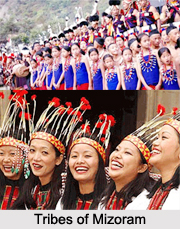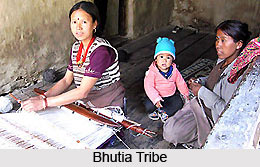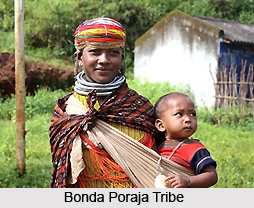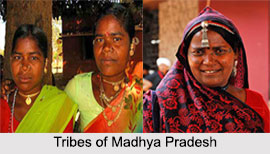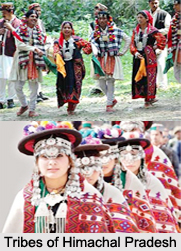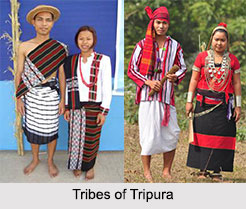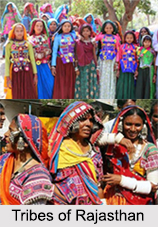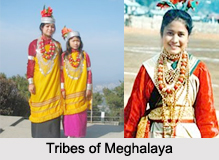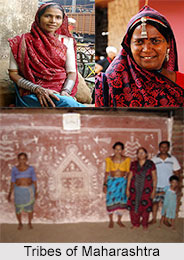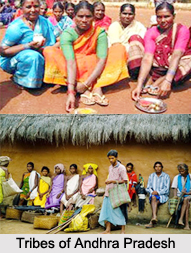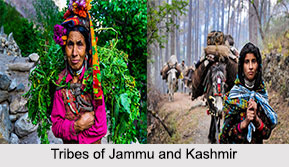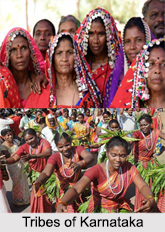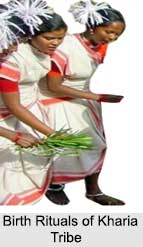 Birth Rituals of Kharia tribe is associated with the execution of several rituals, customs and practises performed after the birth of the child. The chief aim backing the performance of birth ceremony is to inculcate certain basic values in the new born child when he is still in his ignorant stage.
Birth Rituals of Kharia tribe is associated with the execution of several rituals, customs and practises performed after the birth of the child. The chief aim backing the performance of birth ceremony is to inculcate certain basic values in the new born child when he is still in his ignorant stage.
Pre-Birth Rituals of Kharia Tribe
The sacred ceremony of Dorho-jo-dom i.e. expelling the Dorho or Darha spirit from a woman is performed by the Kharia tribe when a woman conceives for the first time. The ceremony is also practised when a woman gets a still born child or experiences successive abortions or even losses children during infancy.
Several fascinating rituals are also observed by the Kharias during delivery or in case of labour pain. The Kharias open all the closed objects like door, locks, lids of boxes and corks of bottles during labour case with the belief that it would magically open the mouth of the uterus. The ceremony performed either by a Mati or a Kalo also serves the purpose of relieving the pregnant woman of the Kiri, a vow that she might have taken earlier neither from her father-in-law, mother-in-law or husband. The ceremony is celebrated with the purpose of relieving the woman of delivery pain. A small heap of arwa rice touched by an egg in way that the egg picks up some rice grains forms an important part of the ceremony. He then breaks the egg on the rice heap and sprinkles water on it using mango twigs. Upon sprinkling water on the pregnant woman, the articles used for the ceremony are thrown on the road. The Kharias believe that the performance of the ceremony would discard the vow on the road and thus, depart from the woman.
Another sacred ceremony closely related to the birth of the child is the performance of certain rituals during the loss of children in infancy. The economic condition of the family however, determines the practise of the ceremony. An affluent family performs the ceremony of chambandhi, a thread made of dried intestinal portion of a cow that is tied by a member representing the Lohra community around the neck of the newly born baby. It is strongly believed by the Kharia that the performance of this ceremony would guard the baby against all evil spirit. Later as the child grows up, the sacred ritual of Cham Utarna (thread cutting) is performed during marriage. The family may also perform the ceremony of Gendura fakura i.e. throwing on cow dung heap. During the ceremony the mother places her baby on a cow dung heap. The Kusrain also known as the midwife immediately picks it up and `sells` it to the mother at a nominal price. This ceremony is performed to ward off the evil spirit.
Shudhom (Purification Ceremony)
The Kharias perform the Shudhom i.e. the purification ceremony usually on the seventh day after birth of the child. The celebration is marked by cleaning of the house as well as the village. The mother with her baby accompanied by other female members of the family takes bath in a nearby pond or tank. Prior to taking bath the mother puts five vermillion marks on a stone lying at the water sources. The female members then bow down and offer worship to the Ponomosor, praying for the good health of the baby and the mother. Upon returning home, rice beverage is sprinkled all over the house before it is consumed by the members of the family.
Mundan (Tonsure Ceremony)
The Mundan ceremony or the first hair tonsure is performed during the afternoon time on the day on which Shudhom is performed. The mundan is executed by the maternal uncle of the baby in the courtyard of the house. The ceremony can also be performed by any male member of the mother`s side of the family in the absence of maternal uncle. As per the rituals the hair of the child is thrown over the bamboo shoot. It is commonly believed that it would enable a rapid growth of the hair of the child. The mother and her child are presented with new yellow clothes from maternal side. Prior to the commencement of the ceremony a leaf cup containing a handful of paddy is placed before the baby, deemed to the first gift from the father`s side. The paddy at the end of the ceremony is kept aside and later sown in a separate field during the rainy season. The product is however, never sold and it goes on multiplying until the baby grows up.
Chhatti and Nimi Raina (Name giving Ceremony)
The name giving ceremony is performed by the family members of the new born child after the Mundan ceremony. The Kalo who presides over the ceremony prepares a thread wear of seven strands and offers prayers to the Sun and Moon, requesting them to take care of the welfare and health of the family and the child.
Kanbedhi or Lutur-Tebki (ear boring ceremony)
The Kanbedhi ceremony also known as Lutur-tebki is performed within a span of one year after the performance of the Chhatti ceremony. The date for the celebration of the ear boring is fixed during the morning on the day following either the Bandai or Nawakhani. During the morning hours of the appointed day the Kalo performs the Paisari Puja at the courtyard of the house of the child. The ceremony is performed for the wellbeing of the relatives as well as the child. The child to undergo the ceremony is bathed early in the morning and dressed in new clothes. The Mitta or the mother`s father usually performs the ear boring of the child who is seated on the lap of his father in the courtyard, facing the east direction. The child is marked by Lukui grass or Siar punchh grass on the lower lobe of the ears by the powdered arwa rice. A Lorka i.e. a copper needle, utilized for piercing the ear lobes of the child, is twisted in the shape of rings on the ears. A small amount of powdered rice or chewed Urid (horse bean) pulse is immediately applied over the wound. The ceremony is followed by offering Tapan Golang to Ponomosor and ancestral spirits by the father of the baby.
Vivi-Tofna or Hair Tying
Vivi-Tofna or Hair Tying is performed by the Kharias when the child attains the age of 10 years. The Mitta of the child, endowed with the responsibility of performing the rituals, brings with him a string made of Sabai grass and golang rice beer. The child takes bath early morning and is then seated on a mat in the courtyard before the officiant who rubs oil over the child`s head and combs the hair with a raw bamboo comb. The comb is then kept hanged on the back of the child. A cup is filled in with rice beer into which a sting is dropped. The officiant then waves the sting below the head of the child. The process is repeated seven times. Finally, the hair gathered is tied into a knot. A piece of new cloth is used as turban in case of a boy and in case of a girl, it is wrapped around her body. The officiant presiding over the ceremony offers Tapan Golang to Ponomosor and the ancestral spirits, praying to safe guard the hair of the child from being affected by any disease.
